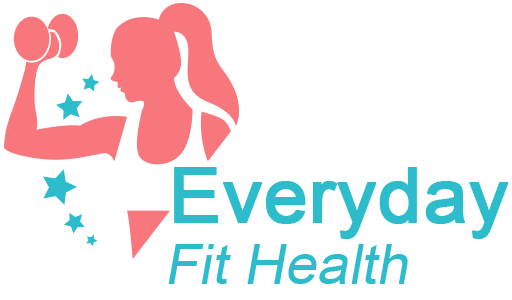Pedaling to Health: How Cycling Can Benefit Your Body and Mind
Improves cardiovascular health: Cycling is an excellent form of aerobic exercise that gets your heart rate up, increases blood flow, and strengthens the heart and lungs.
Boosts endurance and stamina: Cycling is a great way to improve your endurance and build stamina. Regular cycling can increase your ability to ride for longer distances and at higher speeds.
Builds muscle strength and tone: Cycling is a low-impact exercise that works many of the major muscle groups, including the legs, glutes, and core. Over time, cycling can build muscle strength and tone in these areas.
Low-impact and joint-friendly: Cycling is a low-impact exercise that puts minimal stress on the joints, making it a great option for people with joint pain or injuries.
Reduces stress and improves mental health: Cycling is a great way to reduce stress and improve mental health. It can help to clear the mind, reduce anxiety and depression, and boost overall mood.
Burns calories and aids in weight loss: Cycling is a great way to burn calories and aid in weight loss. Depending on your weight, fitness level, and intensity of the ride, cycling can burn up to 500 calories per hour.
Improves balance and coordination: Cycling requires a certain degree of balance and coordination, which can improve over time with regular cycling.
Suitable for all fitness levels: Cycling can be done at various intensity levels, making it a suitable exercise for people of all fitness levels and abilities.
Overall, cycling is a fun and enjoyable form of exercise that can provide numerous benefits for both the body and mind. Whether you’re looking to improve your cardiovascular health, build muscle strength, or reduce stress, cycling is a great option to consider.
Saddle Up: A Beginner's Guide to Cycling for Fitness
Choose the right bike: There are different types of bikes for different types of riding. For fitness, a road bike or a hybrid bike is a good option. These bikes are lightweight and designed for speed and efficiency.
Get the right gear: Cycling gear includes a helmet, cycling shorts, and cycling shoes. These items are designed to keep you safe and comfortable while riding.
Start slowly: As a beginner, it’s important to start slowly and build up your endurance. Start with short rides and gradually increase the distance and intensity.
Focus on form: Proper form is essential for efficient and safe cycling. Keep your upper body relaxed and focus on pedaling with a smooth, circular motion.
Stay hydrated: Drinking water before, during, and after your ride is important to stay hydrated and maintain your energy levels.
Set goals: Setting goals can help you stay motivated and track your progress. Start with small goals and work your way up to more challenging ones.
Remember, cycling is a low-impact exercise that is easy on your joints and can be done at your own pace. With the right equipment and mindset, cycling can be a fun and effective way to improve your fitness and overall health.
Cycling for Weight Loss: Tips and Strategies for Shedding Pounds on Two Wheels
Set a realistic weight loss goal: It’s important to set a realistic goal to help you stay motivated and on track with your weight loss journey.
Track your progress: Use a journal, a fitness app or a tracking device to keep track of your progress, including your weight, the distance you cycle, and the calories you burn.
Focus on your diet: Cycling alone won’t lead to weight loss if you’re not paying attention to your diet. Focus on eating a healthy, balanced diet that is rich in whole grains, fruits, vegetables, lean protein, and healthy fats.
Use interval training: Incorporate interval training into your cycling routine, alternating between high-intensity and low-intensity periods to burn more calories and improve your fitness.
Vary your routes: To prevent boredom and to challenge your body, vary your cycling routes by adding hills, incorporating sprints, or trying different terrains.
Invest in the right gear: Invest in a comfortable, well-fitting bike and clothing that is appropriate for the weather and your cycling needs. This will help you stay motivated and comfortable during your rides.
Stay hydrated: Drink plenty of water before, during, and after your rides to stay hydrated and prevent dehydration.
Find a cycling buddy: Cycling with a friend or joining a cycling group can provide motivation, accountability, and social support.
Pushing the Limits: Advanced Cycling Techniques for Experienced Riders
- Interval training: Intense bursts of effort followed by periods of rest or lower intensity can help experienced cyclists improve their speed, endurance, and lactate threshold.
- Hill climbing: Hills can be challenging for any cyclist, but experienced riders can learn to use their body weight, gear selection, and pacing to tackle steep inclines more efficiently.
- Cornering: Advanced techniques for cornering include leaning into turns, shifting weight to the outside pedal, and looking ahead to anticipate the path of the road.
- Drafting: Riding closely behind another cyclist can help reduce wind resistance and save energy, but it requires skill and trust between riders.
- Bike handling: Experienced riders can develop their balance, control, and coordination by practicing drills such as riding slowly, riding with one hand, and weaving between obstacles.
- Nutrition and hydration: Longer or more intense rides require careful attention to fueling and hydrating, with strategies such as carb loading, electrolyte replenishment, and timing intake around the ride.
- Mental strategies: Experienced cyclists can use visualization, positive self-talk, and mindfulness to manage the physical and mental challenges of pushing themselves to the limit.
- Cross-training: Activities such as strength training, yoga, or swimming can complement cycling and improve overall fitness, flexibility, and recovery.












